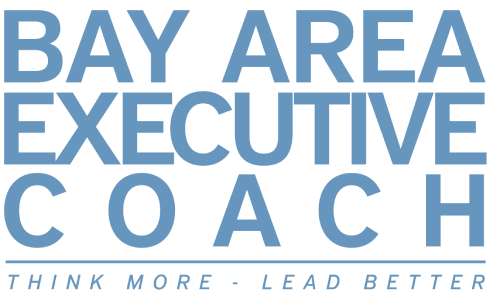Winning recognition as a “Best Place to Work” can help your company attract top talent while retaining your best employees. A true win-win amidst the great resignation. It’s clear that people are attracted to companies where they feel valued, supported, respected and rewarded.
But what if your company wasn’t so recognized? Not to worry, you can still stay a step ahead of the competition by retaining your people and recruiting the best talent in the marketplace by modeling some of the best practices of companies who’ve landed on “Best Place to Work” lists. We did our research and came up with a list of the commonalities among companies who are rated as best places to work.
Before we get to the 11 ideas you can execute upon, it’s important to state that in today’s pandemic-altered workplace, many prior standards for employee benefits and workplace policies have become less coveted. Companies are evolving at a rapid pace to meet the needs of today’s workers. Therefore, there are new standards and policies that now define an attractive and desirable workplace.
With that said, here are 11 best practices you can deploy over time to make your company one that people long to join and will want to remain with for many years.
1. Create Excitement In the Workplace 
Create programs that excites each member of the team while they’re doing meaningful work. These programs might include an annual healthy living program encouraging daily exercise and other self-care actions including tracking and prizes for people and teams who embrace the opportunity.
Make people feel like they belong and are recognized – in both big and small ways – and see them as whole people. Celebrate their personal achievements (like leading the board of a local non-profit or running a half marathon) as you would their receiving a patent or exceeding a sales quota.
2. Place Mental Health and Well Being on Par with Physical Health
The anxiety and stress associated with the pandemic have exacerbated long simmering issues surrounding employee stress, depression, and “job burnout.” Progressive companies today recognize that mental health is just as important as physical health. Providing confidential, discreet mental health counseling and support services to employees will show that your company truly cares about their complete well-being.
Other companies are seeking to take a more proactive approach by holding mindfulness classes, creating meditation spaces, and providing flexible work schedules up to and including the implementation of 4-day work weeks. LinkedIn even had a full-time executive dedicated to mindfulness and compassion.
3. Listen to Employees and Take Action
Truly being a “best place to work” starts with listening to your employees. If you hear the same complaints over and over again, do something about it. If you hear from a group of employees that a policy at the company needs revisiting, do it. If an idea for a new way to do things keeps resurfacing, pull a team together to take a serious look at it and consider a change. Listen to the needs of the people that work for you and use their feedback as a prompt to spring into action.
4. Foster Open and Transparent Communication
The best places to work embrace open channels of communication that allow people to voice their concerns and exchange information without fear of ridicule or reprimand. Adopting a “yes, and . . . ” response is one simple technique that leadership can model. This technique accepts what is and seeks to open the door to what can be. And always tell employees the truth: good or bad. Truth and authenticity build trust, and trust is essential to uniting a workforce and making people feel like they want to belong.
For example, there’s a lot of talk about whether companies should resume with in-office work post-pandemic or create a new situation where many are allowed to be permanently remote or have a hybrid schedule. Each company has to make their own decision about their post-pandemic policy. The more open and transparent this conversation is, the better the workforce will feel regardless of what the ultimate decision is.
5. Install Anonymous Employee Survey Software

One of the ways companies can learn about what employees are thinking or feeling is by the use of pulse surveys. These surveys can be conducted using a variety of software applications available as standalone options or built-in to HR suites.
By doing these regular pulse checks of your employees, you become aware of potential trouble spots in your organization and can use that information to take corrective action. By the time a “Best Place To Work” award survey arrives in your employees’ inboxes, they’ll have nothing but positive things to say.
An alternative to these pulse surveys is what’s called an emotional culture index. This is a simple survey by which an organization can see what the temperature of the team is. Are they feeling empowered and appreciated or anxious and exhausted? We provide this survey at no cost as an introduction to our emotional intelligence-related coaching and training services. Find out more about this free tool by scrolling to the bottom of this page.
6. Invest In Your Employees
To become a “Best Place to Work,” a company must believe in and act towards investing in their people. Investing in employees today is no longer a nice to have but is now a must have. It begins with the initial onboarding experience and then continues throughout their career path within your organization.
Imagine the benefits of having a learning organization where people are continuously improving their skills and raising the bar for what they can do and be. It’s hard to not enjoy this experience of growing at work and makes a company hard to leave. It’s also hard not to make the connection between being a learning organization and one that is more adaptive and innovative.
7. Don’t Let Rapid Growth Cause You to Drift Away from Your Culture
When a company grows rapidly from a small, tightly-knit band of employees into a large- scale operation, it’s possible that its culture will be affected adversely. Don’t let this be the case for you and don’t grow away from your original core values that drive your culture.
One way is to ensure you know what your culture stands for and you recruit to find people that are a good fit. The well-known business management consultant and author Jim Collins noted: “A company should limit its growth based on its ability to attract enough of the right people.” He may as well have been talking about cultural fit with that statement. By minding your culture as the company grows, ensuring people know the company’s values, and how they contribute to strengthening them, you will create a “Best Place to Work” kind of company.
8. Modify Perks and Benefits to Match Changing Business Conditions.
Onsite meals and gym classes don’t apply to remote workers. Instead offer new perks like virtual happy hours, “recharge” days off, DoorDash gift cards that allow for free lunch to be delivered, and occasional acknowledgement gifts that arrive in the mail through services like Thnks. Offer meaningful and appropriate benefits that match the times.
9. Banish Micromanaging
Micromanaging employees kills their initiative, confidence, and will to learn and grow. It’s especially inappropriate and unappreciated with a remote workforce that’s essentially making their own schedules and setting their own task priorities. Trust your employees to get their work done in the way that’s most efficient to them. Focus on the results, not the process.
In the well-respected book, Drive by Dan Pink, he writes about the need for autonomy as a major part of one’s work experience.
If you want to really do a 180, create a culture of coaching instead of micromanaging. This is a culture where leaders don’t have all the answers and tell people what to do. Instead, they have thoughtful conversations with their team members and draw out solutions from them through questions akin to a coaching conversation. Talk about empowerment. If you’d like to install a coaching culture in your company, we’d be happy to talk with you about that. Just send us a message.
10. Create A Clear Path For Career Development
Employees want to be part of an organization that has a clear path of growth for its workers. A company that works towards helping its employees to satisfy this need will appeal to the workforce. Companies should design a path for career growth through training courses, seminars, career counseling, and mentorship programs for employees.
Keep in mind that career paths are not following a traditional ladder approach as often as they once did. The new career paths are more like lattices with people often making lateral moves to enrich their learning and create new opportunities. This sort of career path may also be better for organizations as it makes it perhaps easier to find new opportunities for development without it always having to be vertical. It also enables a more diverse workforce capable of understanding the organization from a broader perspective. Learn more about this topic here.
11. Show Respect and Appreciate Diversity
To wrap up this list, this last practice might seem blindingly obvious, but it’s surprising how far some organizations still have to go in this area. The “Best Places to Work” respect all their employees and celebrate their diversity and multi-faceted contributions based on different cultures, backgrounds and orientations. They also hire, pay and promote without bias. When we honor and respect the differences employees bring to the workplace and view these differences as strengths, we create inclusion and ownership. This is now an essential element of a company striving to be a best place to work. Read more about topic #11 on our blog post, “Building a ‘Best Place to Work’ – Strategy #11: Show Respect and Appreciate Diversity.”
We hope this piece has caused you to examine your own leadership style and team culture. Better yet, it’s proved as something of a benchmark to measure your company against. As is often said about many of the practices on this list, they may be easy to understand, but require patience, fortitude and long-term commitment to implement effectively. Start with the few that will make the greatest difference in your company and steadily add on until you truly have assembled a company that would not only land on the list, but lead it.
A trend in the field of coaching that’s well under way is to create a coaching culture within an organization. Learn more by reading our article on Creating a Culture of Coaching in an Organization!
Get in touch if you would like help with planning or execution.
Featured photo sourced from Pexels which can be found here and secondary photo also sourced from Pexels can be found here.
Watch our featured videos on this article below and share them with colleagues!










